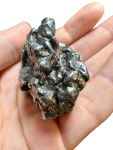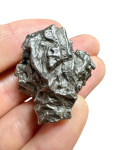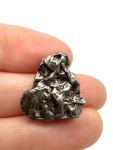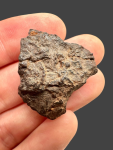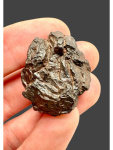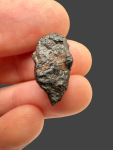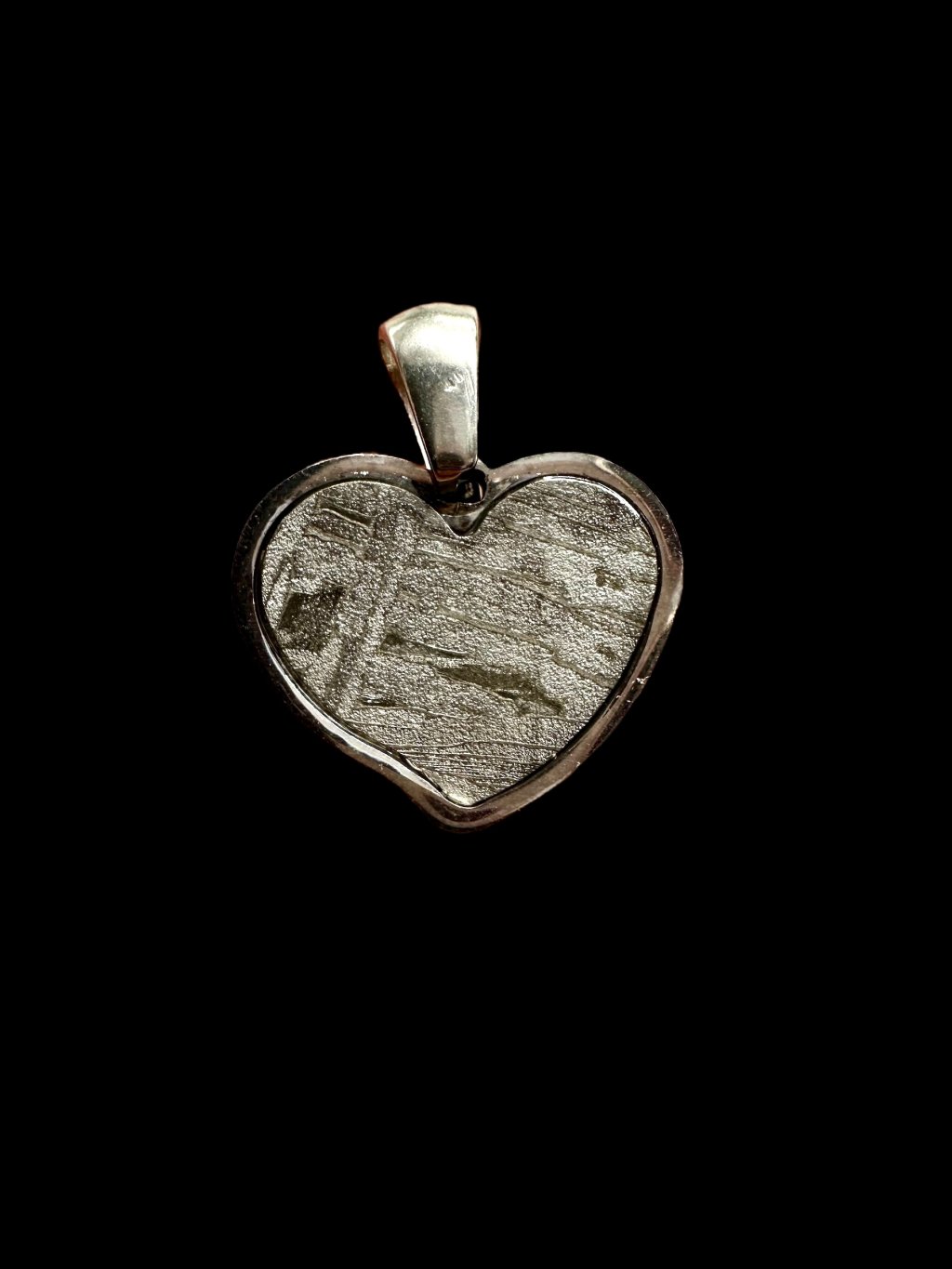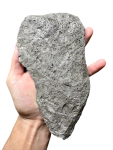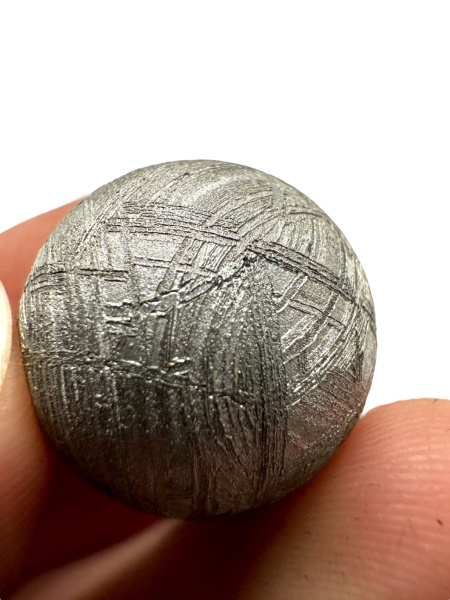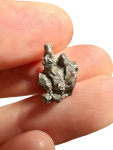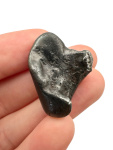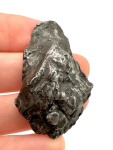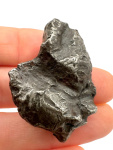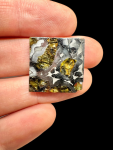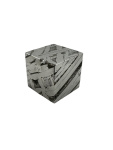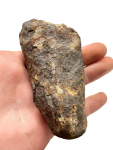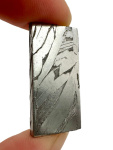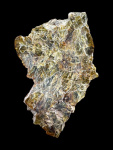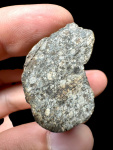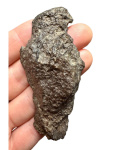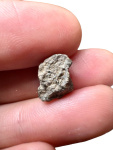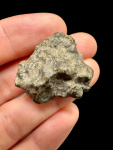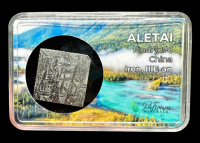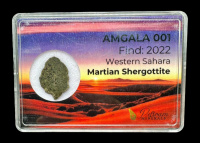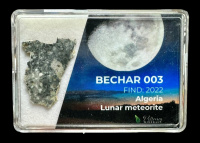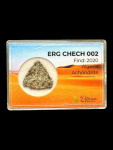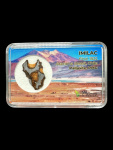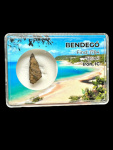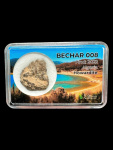Do you want to start collecting meteorites but don't know how and where to start? With an overwhelming number of species to choose from, the first step can be confusing. This guide will give you an overview of the best meteorites for beginners - from affordable specimens that should definitely not be missing from your collection, to rarer pieces that will add value and uniqueness to your collection. You'll also learn what types of meteorites are most popular and what to consider when collecting them.
Recommended meteorites to start with
One of the most famous meteorites you can get is the Campo del Cielo from Argentina. This iron meteorite has been found in large quantities and is often available in its raw state, although you can also find cut and polished pieces on the market. When buying, it is important to remember that meteorite is quite unstable and oxidizes quickly, although it is usually treated with oil to protect against corrosion. Campo del Cielo is popular and commercially available, making it an affordable and fascinating sample of the universe that should not be missing from any collection.
Another well-known iron meteorite is Canyon Diablo from Arizona, USA, famous for Barringer Crater, also known as Meteor Crater, which was formed by its impact about 50,000 years ago. The story of this crater is linked to geologist Daniel Barringer, who spent decades searching for a huge piece of meteorite that he believed was buried beneath the crater. Eventually, it turned out that the main body had completely vaporized on impact due to an extreme release of energy. With a total mass of approximately 30 tonnes, this meteorite is one of the more affordable meteorites found and is usually available in its raw form.
Another well-known and popular iron meteorite is Aletai from China, which is characterised by the beautiful Widmanstätten patterns that appear when cut and etched with acid. This meteorite is not only available in its raw state, but is also often found in the form of polished plates, cubes, prisms, spheres and even pendants.
The Swedish iron meteorite Muonionalusta, known for its beautiful Widmanstätten patterns, like Aletai, should definitely not be missed in the collection. This meteorite often appears in the form of cuts, slices and spheres, but even in its raw state it has its own unmistakable charm.
Sikhote-Alin is a famous iron meteorite from Russia that is affordable and famous for its dramatic fall in 1947. The event was so intense that the impact created thousands of fragments that tore through the forest and left dozens of craters on the ground. Meteorite fragments are characterised by deep depressions known as regmaglypts, which are formed as they pass through the atmosphere. Sikhote-Alin is usually sold in its raw state.
If we move from iron meteorites to the less common pallasites, we find that they make up only 1% of all meteorites found. Yet even among them there are famous specimens worth having in your collection. These meteorites are unique in their composition, which includes olivines - often beautifully coloured from yellow to green shades, and often translucent. Because of their aesthetic beauty and rarity, pallasites are one of the most sought-after types of meteorites among collectors.
Sericho from Kenya, discovered in 2016, is also among the easily accessible pallasites. This meteorite is known for its evenly dispersed olivine crystals that are embedded in a metallic matrix. The crystals can have beautiful hues from yellow to green, although not all are translucent in sections. Sericho is popular among collectors for its aesthetic value and is available in cut slabs, end cuts and even in the rough.
As far as stone meteorites are concerned, they are divided into chondrites and achondrites.
Chondrites make up approximately 86% of all known meteorites, making them the most common type of meteorite. Chondrites are made up of spherical particles, called chondrules, which are spheres of a few mm in size made up mainly of olivines, plagioclase, pyroxene and other minerals.
Achondrites, unlike chondrites, are characterized by the absence of chondrules. Achondrites are the result of more intense geological processes such as melting and differentiation that occurred on parent bodies such as planetesimals and minor planets. These meteorites are similar in texture to terrestrial igneous rocks and contain minerals such as pyroxene and plagioclase in larger crystals. Achondrites are divided into different subgroups, such as HED meteorites (from the asteroid Vesta) or lunar and Martian meteorites, which are fragments from the Moon or Mars.
The NWA mystery
What is NWA and why is it sometimes a number and sometimes just an X? A huge number of different meteorites have fallen into the Northwest Africa region, and some of these meteorites have not been scientifically assigned to any known fall or find and thus have been given the general designation NWA X (Northwest Africa). These meteorites are more affordable for this reason, so you can get larger pieces for relatively low prices. If a meteorite has been classified and assigned to a find or fall, it has a number after the NWA name instead of the X mentioned above, such as meteorite NWA 869 (chondrite), NWA 14131 (achondrite - eucrite) or NWA 7831 (achondrite - diogenite), etc.
So we recommend to start in the category of stone meteorites with some NWA X, which can still be very interesting and reasonably priced.
The Chelyabinsk meteorite is one of the most famous chondrites, thanks to a dramatic fall recorded in 2013 over Russia. This meteorite has become the best documented fall in history because it was captured on countless videos and photos from car dashboard cameras and security cameras. Chelyabinsk meteorite fragments are most often found in their raw state and are very popular among collectors due to their accessibility and important historical story.
Bechar 003 is a lunar meteorite, a real fragment from the surface of our Moon. Although the price of this achondrite is higher than that of ordinary chondrites, it remains very popular among collectors and the general public. There are both raw pieces, which remain as they fell to Earth, and cut and polished slices with a distinctive texture. A lunar meteorite like Bechar 003 is a unique piece that should not be missed in any meteorite collection.
Amgala 001 is another very popular achondrite that comes from the planet Mars. These fragments were formed by the impact of another asteroid on the surface of Mars, which led to the rock being ejected into space. After a long journey, this material was caught by the gravitational force of the Earth and fell to its surface. This is a relatively new find from December 2022, with a total found mass of less than 35 kilograms. Amgala 001 is available in raw pieces of various sizes and polished slices, making it an attractive addition for collectors of space artefacts.
Conclusion
This will get you started with the most well-known and common representatives of each major category, which should not be missing from any meteorite collection. We believe this will help you get started and if you are interested in having your collection nicely boxed, we recommend our boxed collection, where you will find almost all of these representatives with graphics.
And for more demanding customers:
If you're looking for something really special to add to your basic collection, we recommend Erg Chech 002 - a rare volcanic rock from a protoplanet in the early days of the solar system, which means it's older than the Earth itself. Another popular collector's piece is Imilac, a beautiful pallasite with olivine crystals, originally from Argentina. The Bendegó meteorite, which has an interesting story behind it, is also worthy of attention. This massive iron meteorite had to be intricately transported to the National Museum of Rio, where it survived a devastating fire in 2018 almost intact, and many others.
Read also our article: The Most Interesting Meteorite Stories
Author: Terezie Laubrova

